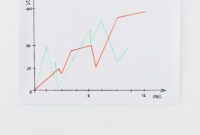In today’s fast-paced business environment, “using business intelligence to identify market trends” is crucial for staying ahead of the competition. Companies that effectively leverage business intelligence (BI) tools can gain valuable insights into market trends, customer behavior, and emerging opportunities. This article explores how businesses can use BI to identify and capitalize on market trends, ensuring they remain competitive and innovative.
What is Business Intelligence?
Business Intelligence (BI) refers to the technologies, applications, and practices for the collection, integration, analysis, and presentation of business information. The purpose of BI is to support better business decision-making. Essentially, BI systems are data-driven decision support systems (DSS).
The Importance of Business Intelligence
BI enables organizations to:
- Make informed decisions based on data
- Identify market trends and opportunities
- Improve operational efficiency
- Gain a competitive advantage
Using Business Intelligence to Identify Market Trends
Data Collection and Integration
The first step in using business intelligence to identify market trends is data collection. This involves gathering data from various sources, including customer feedback, sales records, social media, and market research reports. The integration of this data into a centralized system is crucial for comprehensive analysis.
Data Analysis and Visualization
Once the data is collected, the next step is data analysis. BI tools like Power BI, Tableau, and QlikSense can help businesses analyze large datasets to identify patterns and trends. Data visualization plays a key role here, as it allows businesses to see trends more clearly through charts, graphs, and dashboards.
Identifying Market Trends
Using BI tools, companies can identify several types of market trends:
- Customer Preferences: Understanding what customers prefer helps in product development and marketing strategies.
- Sales Patterns: Analyzing sales data over time can reveal seasonal trends or the impact of marketing campaigns.
- Emerging Markets: Identifying regions or demographics with growing interest in your products or services can open new markets.
- Competitor Analysis: Understanding competitor strategies and market position can help in strategic planning.
Practical Applications of Business Intelligence in Identifying Market Trends
Case Study: Retail Industry
In the retail industry, BI can be used to track customer purchasing habits. For example, a retailer might notice that sales of a particular product spike during certain months. By analyzing this data, the retailer can adjust inventory and marketing efforts to capitalize on these trends.
Case Study: Healthcare Industry
In healthcare, BI can identify trends in patient data that help improve treatment plans. For instance, if a hospital notices an increase in patients with specific symptoms, they can allocate resources and staff accordingly to improve patient care.
Case Study: Financial Services
In financial services, BI can help identify investment trends and risks. By analyzing market data, financial institutions can offer better advice to their clients and make more informed investment decisions.
The Role of Predictive Analytics
Predictive analytics, a subset of BI, uses historical data to predict future trends. By applying statistical algorithms and machine learning techniques, businesses can forecast market trends and make proactive decisions. For example, an e-commerce company might use predictive analytics to forecast future sales and adjust inventory levels accordingly.
Challenges in Using Business Intelligence
While BI offers significant advantages, there are challenges to consider:
- Data Quality: Poor quality data can lead to incorrect conclusions.
- Data Integration: Integrating data from multiple sources can be complex.
- Cost: Implementing BI systems can be expensive.
- User Adoption: Ensuring that employees are trained and willing to use BI tools is essential.
Conclusion
Using business intelligence to identify market trends is essential for businesses aiming to remain competitive in today’s dynamic market. By effectively collecting, analyzing, and visualizing data, companies can uncover valuable insights that drive strategic decision-making. While there are challenges to implementing BI systems, the benefits far outweigh the drawbacks, making BI a critical tool for modern businesses.
FAQs
Q: What is business intelligence?
A: Business intelligence (BI) refers to the technologies, applications, and practices used to collect, integrate, analyze, and present business information to support better decision-making.
Q: How can BI identify market trends?
A: BI identifies market trends by analyzing large datasets to uncover patterns and insights, which can reveal customer preferences, sales patterns, emerging markets, and competitor strategies.
Q: What tools are used in business intelligence?
A: Common BI tools include Power BI, Tableau, and QlikSense, which help in data analysis and visualization.
Q: What are the challenges of using business intelligence?
A: Challenges include ensuring data quality, integrating data from multiple sources, the cost of implementing BI systems, and achieving user adoption.
Q: How does predictive analytics relate to BI?
A: Predictive analytics is a subset of BI that uses historical data and statistical algorithms to predict future trends and support proactive decision-making.
By utilizing business intelligence to identify market trends, businesses can make data-driven decisions that enhance their competitiveness and drive growth.



